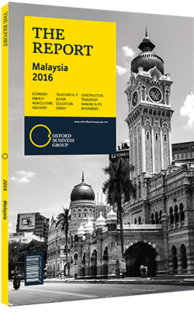Ismail Ibrahim, Chief Executive, Iskandar Regional Development Authority (IRDA): Interview

Interview: Ismail Ibrahim
How is the continued sustainability of Iskandar Malaysia’s development being ensured?
ISMAIL IBRAHIM: In the enhanced Iskandar Malaysia Comprehensive Development Plan (CDP) II for 2014-25 we ensure that Iskandar Malaysia continues to be developed as a holistic ecosystem. The three main elements in developing the region for balanced and sustainable growth are wealth generation, resource optimisation and low carbon emissions, and wealth sharing and inclusiveness.
Besides that, one of the five big moves identified to lead Iskandar Malaysia towards becoming a sustainable metropolis of international standing is Greening Iskandar Malaysia. This project aims to transform Iskandar Malaysia into a green and low-carbon region through urbanscape and the protection of the ecosystem.
What investment opportunities will there be under the second Iskandar Malaysia CDP?
IBRAHIM: In the previous CDP, covering 2006-25, emphasis was given to establishing the development corridor Iskandar Malaysia through infrastructure development and catalytic investments, while in CDP II, which covers 2014-25, the focus is more on strengthening the foundation and ensuring continuous and sustained growth. This review also addresses the changes in development and challenges in the economic scenario globally and locally, as well as integrating initiatives from all the blueprints strategically.
While the investment opportunities remain the same, we have categorised them under two groups: core and emerging sectors. Core sectors are sectors long established in Iskandar Malaysia. They are stable economic drivers with strong horizontal and vertical linkages and a complete ecosystem, with high value-added and employment contribution to the region. Not all core sectors are strong and vibrant, thus further actions are needed to strengthen them. The core sectors for Iskandar Malaysia are electrical and electronics, petrochemicals and oil-gas, food and agro-processing, logistics, and tourism.
Emerging sectors are newly induced; their horizontal and vertical linkages with other industries in the region are relatively underdeveloped. However, they are vibrant or show signs of it, and thus have great potential to become drivers of economic growth. The emerging sectors for Iskandar Malaysia are finance, insurance, real estate and business services, creative industries, health services and education services.
To what degree has Iskandar Malaysia been affected by global and domestic economic uncertainty in recent years?
IBRAHIM: Currently, Iskandar Malaysia is experiencing 7-8% growth annually, and we are confident that we are well on the way to achieving our total cumulative investment target of RM383bn ($94.8bn) when Iskandar Malaysia reaches maturity in 2025. The meticulous and well-researched selection of the nine promoted economic sectors will be key towards achieving the targeted growth over a 20-year time horizon starting from 2006.
To say that we are totally unaffected would not be completely true, but we are foreseeing and mitigating any possible threats to the economic growth of this economic region.
Having said that, as developed economies search for alternative investment destinations and markets, Iskandar Malaysia is now very well positioned to capitalise on this potential. Its strategic location at the heart of Asia’s burgeoning economies, well established logistics infrastructure, investor-friendly policies and multilingual workforce are also favourable qualities.
You have reached the limit of premium articles you can view for free.
Choose from the options below to purchase print or digital editions of our Reports. You can also purchase a website subscription giving you unlimited access to all of our Reports online for 12 months.
If you have already purchased this Report or have a website subscription, please login to continue.

